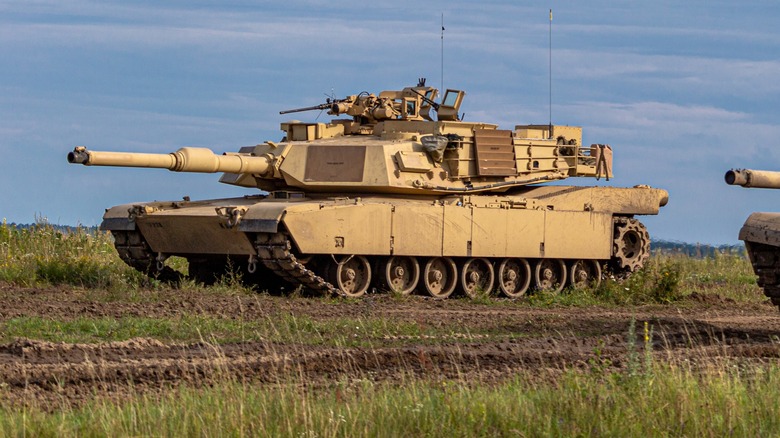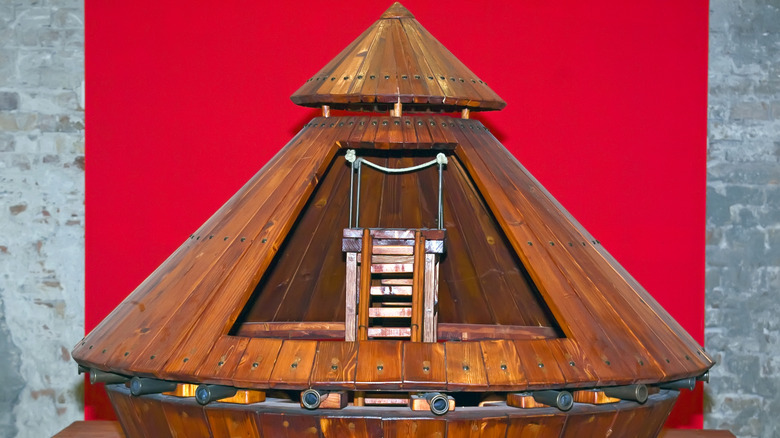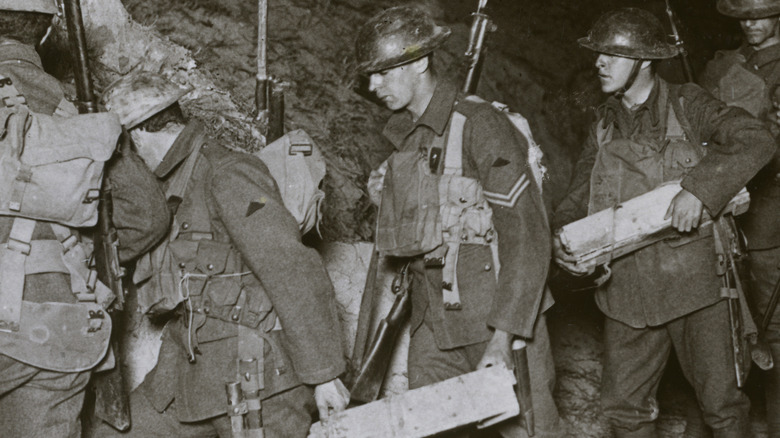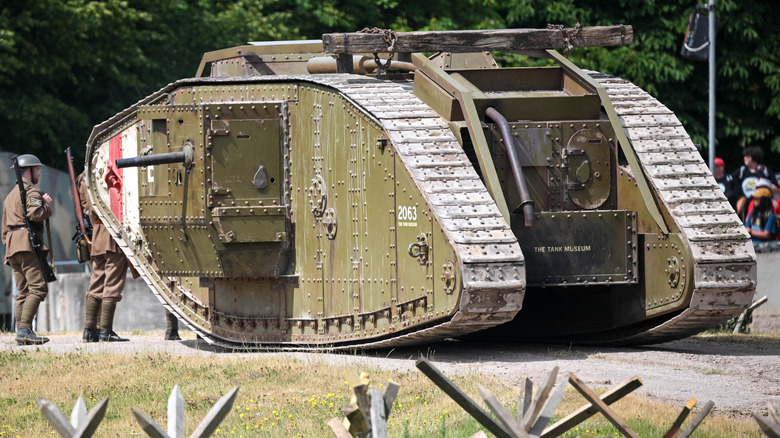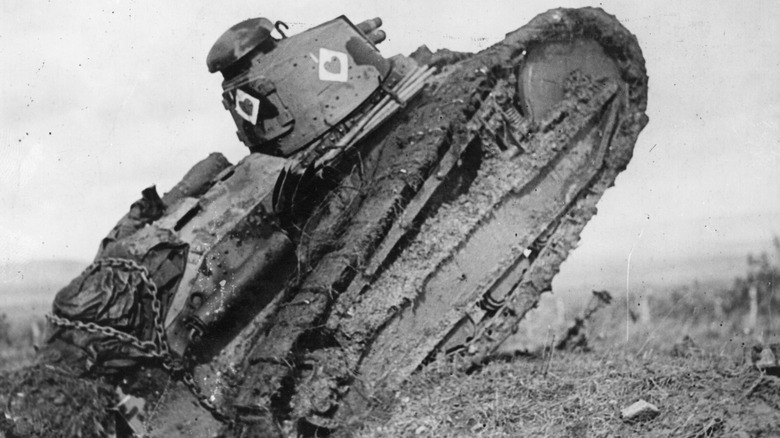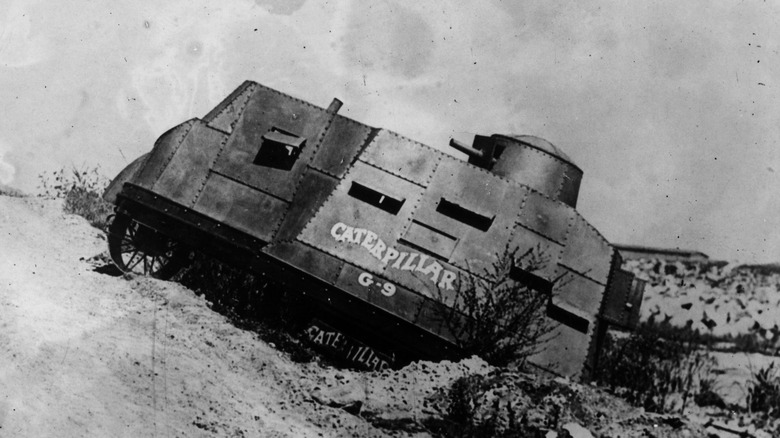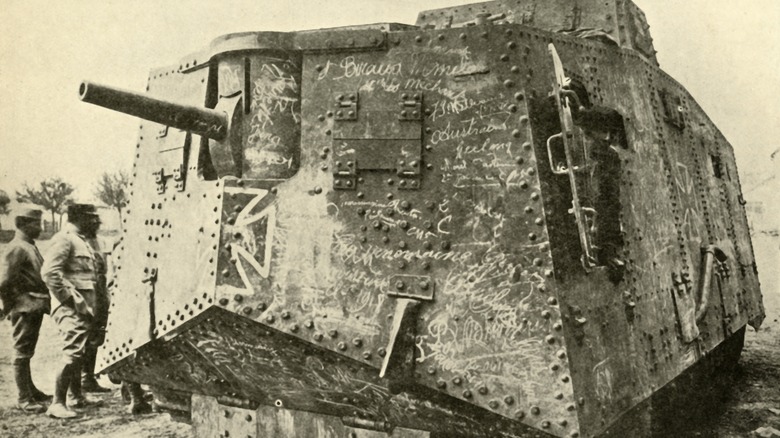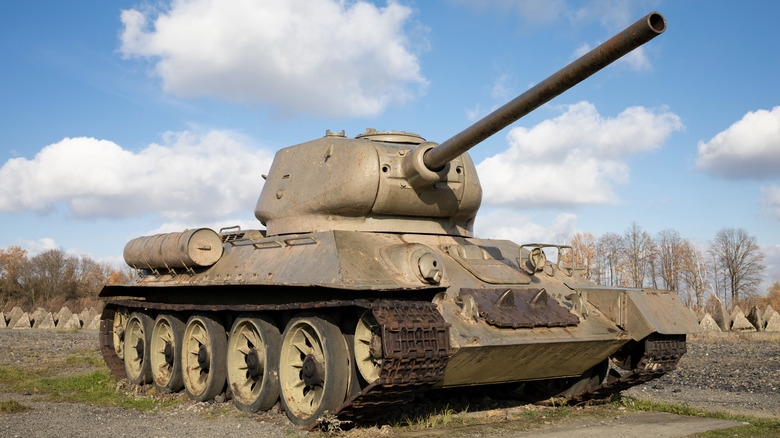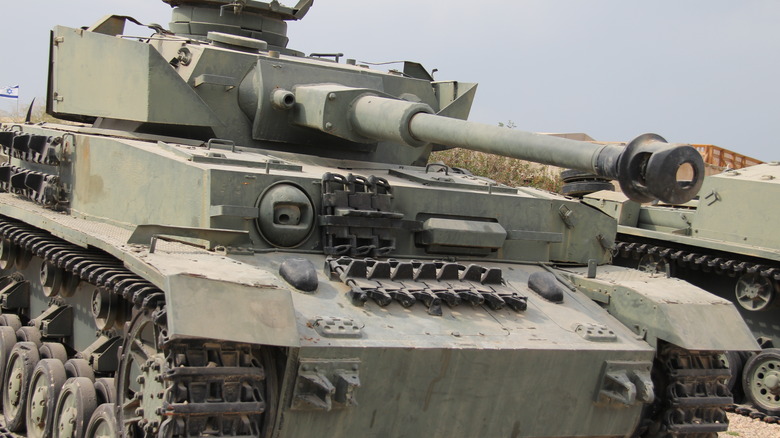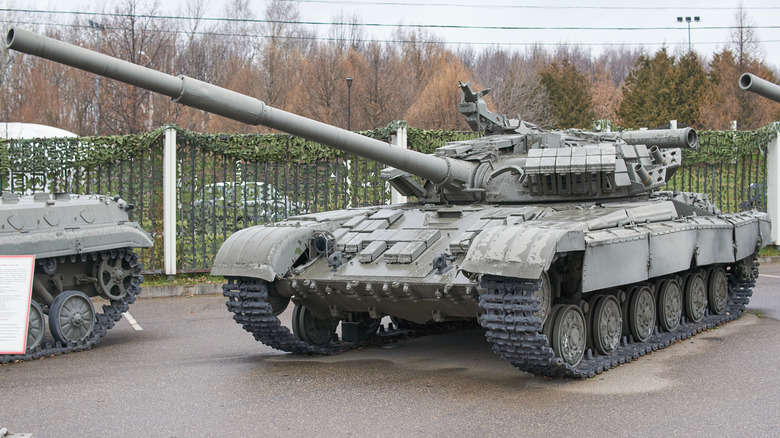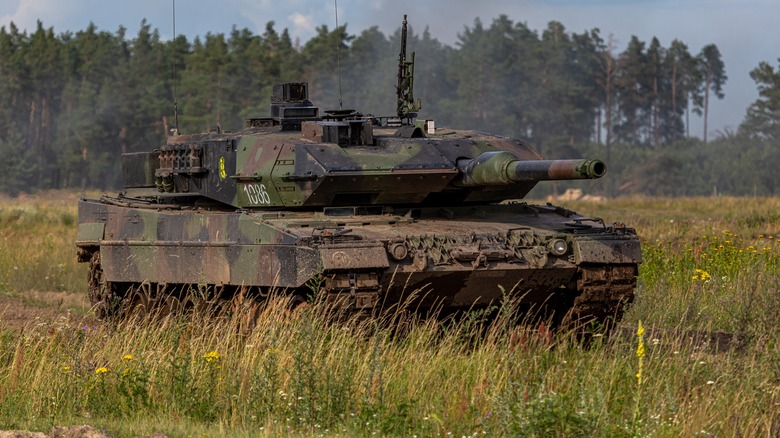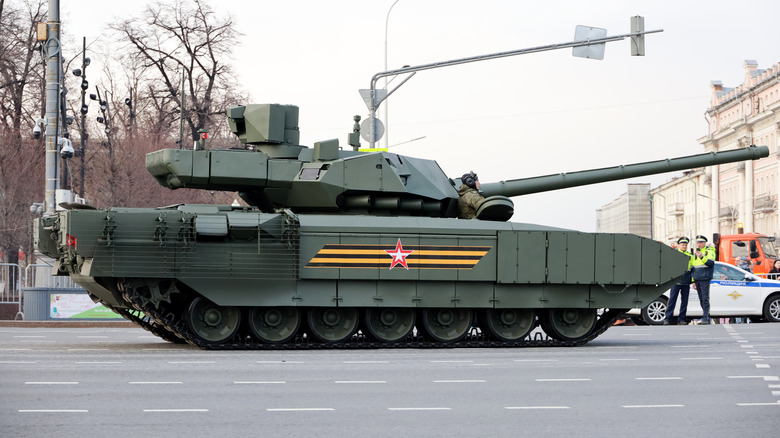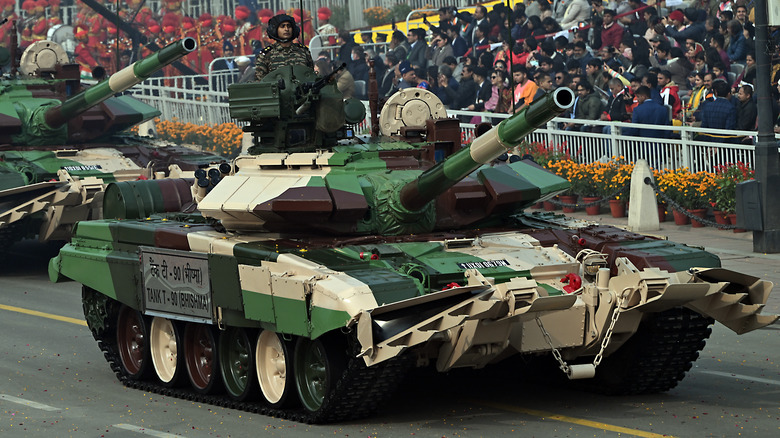Evolution Of Tank Design: From Clunky Crawlers To Modern Marvels
When thinking about war and military vehicles, it's hard not to immediately consider the tank. A hulking, armored brute with a mounted cannon, the tank is in many ways the quintessential war machine. The story of tanks is one of innovation born out of necessity. Conceived amidst the brutal quagmire of trench warfare during the First World War, these behemoths were envisioned as a solution to the deadlock of static frontlines. With their ability to traverse rugged terrain, breach enemy defenses, and deliver devastating firepower, tanks revolutionized the battlefield.
But the journey of tanks extends far beyond their debut on the battlefields of Europe. Over the past century, tanks have undergone an enormous transformation, evolving from lumbering giants with rudimentary armor and armaments to sleek, agile war machines equipped with cutting-edge technology. From the iconic designs of World War II to the advanced systems of the modern era, each iteration of the tank reflects the ever-changing nature of warfare and the ceaseless quest for military dominance.
Earliest Conceptions
While the tank as it is known today first appeared in the early 20th century, humanity has had dreams of armored, mobile cannons for much longer. Long before the thunderous roar of engines and the clanking of treads echoed across the battlefields of the World Wars, the idea of armored vehicles capable of traversing hostile terrain had already sparked the imagination of visionaries and inventors throughout history. Among these early pioneers, perhaps the most famous is Leonardo da Vinci.
In his famous notebooks, da Vinci sketched intricate designs for "fighting chariots" or "armored cars," envisioning machines equipped with protective plating and armed with cannons or other offensive weaponry. While these designs remained purely speculative and never materialized into functioning prototypes, they remain an interesting look into past conceptions of modern tanks.
However, da Vinci wasn't the only person before the 20th century to have the general idea of a tank in mind. The famed Czech general, Jan Žižka, was one of the first to mount a cannon on an armored wagon all the way back in the 14th century. Not exactly what is considered a tank, but definitely a large stride toward the concept. Another notable precursor to the modern tank was the Turtle Ship, developed by Korean Admiral Yi Sun-sin during the 16th century. The Turtle Ship was similar to other battleships of the time, but it was completely covered on top and reinforced with iron. Although it was a ship, this sort of completely armored design still captures the spirit of the tank that would eventually emerge during World War I.
The Great War
During the early days of the 20th century, the terror of modern warfare bared its teeth for the first time. The classic tale of World War I is that of modern technology meeting old ideals and tactics. The brutal trench warfare that characterized the conflict highlighted the pressing need for a change in strategy. As armies grappled with the grim realities of entrenched warfare, military strategists began to explore unconventional tactics and technologies to break the deadlock.
Industrialization had ushered in a new era of warfare, characterized by mass mobilization, mechanized logistics, and the relentless churn of firepower. Traditional infantry tactics proved ill-suited to the harsh realities of trench warfare. The static nature of the frontlines, fortified with barbed wire, machine guns, and artillery, rendered conventional assaults futile.
Amidst the attrition and carnage, many minds began formulating the same idea on how to push through the horror. These minds set out to develop a new breed of weapon capable of traversing the treacherous terrain of no-man's land and delivering a decisive blow to enemy defenses.
Britain's attempt
As World War I engulfed Europe, Great Britain emerged as a trailblazer in the field of tank development, pioneering the use of armored vehicles to break the stalemate of trench warfare. Spearheaded by visionaries like Colonel Ernest Swinton and engineer William Tritton, Britain's early tank development efforts culminated in the creation of the iconic British Mark I tank, which made its battlefield debut on September 15, 1916, at the Battle of Flers-Courcelette.
The Mark I tank represented a triumph of innovation, embodying a radical departure from traditional military doctrine. Armed with machine guns and equipped with armor plating, it boasted the firepower and protection necessary to withstand enemy fire while advancing across the battlefield. Though plagued by mechanical issues and tactical challenges, the Mark I proved its worth at the Battle of Cambrai in 1917, where it played a pivotal role in breaking through German defenses and demonstrating the potential of armored warfare on a grand scale.
Buoyed by the success of the Mark I, Britain continued to refine and expand its tank development program throughout the course of World War I. The introduction of new tank variants, such as the Mark IV and Mark V, showcased advancements in armor, armament, and mobility, further solidifying the tank's status as a formidable weapon of war.
France's attempt
France's early foray into tank development was marked by collaboration with prominent industrialists and innovators, including the renowned automobile manufacturer Renault. The result of this collaboration was the Renault FT-17. Introduced in 1917, the FT-17 featured a revolutionary rotating turret design, providing 360-degree firepower and unprecedented battlefield flexibility. Its compact size, maneuverability, and ease of production made it an ideal platform for supporting infantry operations and spearheading assaults against enemy defenses.
The Renault FT-17 quickly proved its mettle on the battlefield, earning a reputation for reliability and effectiveness in combat. Its innovative design and tactical versatility made it a favorite among commanders and crews alike, cementing its status as one of the most iconic tanks of World War I.
In addition to the Renault FT-17, France also experimented with other tank designs during the war, including the Schneider CA1 and the Saint-Chamond. Though these early attempts at tank development faced various challenges and limitations, French tanks defied the odds in World War I.
America's attempt
As World War I raged across the European continent, the United States found itself thrust into the maelstrom of conflict. Among the myriad challenges facing American military planners was the urgent need to develop armored vehicles capable of matching the firepower and mobility of their European counterparts.
In response to this pressing demand, the United States launched ambitious efforts to design and manufacture its own tanks, albeit with mixed results. One of the earliest attempts at tank development in the United States came in the form of the "Ford 3-Ton M1918," a light tank designed by the Ford Motor Company. Inspired by the success of British and French tank designs, the Ford 3-Ton aimed to provide American forces with a nimble and versatile armored platform capable of supporting infantry operations on the battlefield.
However, the Ford 3-Ton faced numerous setbacks and challenges during its development and deployment. Delays in production, supply chain issues, and design flaws hampered the tank's effectiveness and reliability, limiting its impact on the battlefield. Despite these shortcomings, the Ford 3-Ton represented an important milestone in American tank development, laying the groundwork for future advancements in armored warfare.
Russian and German attempts
While Great Britain, France, and the United States took center stage in the early development of tanks during World War I, Germany and Russia also made significant strides in exploring the potential of armored warfare.
One of Germany's most notable contributions to tank development during World War I was the Sturmpanzerwagen A7V, a heavy tank designed to counter the Allied tank threat on the Western Front. Despite its formidable appearance and powerful armament, the A7V faced numerous challenges, including mechanical unreliability and limited production capacity. Nonetheless, it saw limited combat service and demonstrated the potential of heavy armored vehicles in offensive operations.
One notable Russian tank project was the "Tsar Tank," a strange tank prototype that never made it to battle. The tricycle-like armored vehicle was conceived by engineer Nikolay Lebedenko. Although the Tsar Tank never saw combat and was ultimately deemed impractical due to its unwieldy size and design flaws, it nonetheless represented an ambitious attempt to harness the power of armored vehicles for military purposes.
Developments before World War II
After the end of the Great War, innovations around tanks did not cease. With the war over, the new war machines would see a lot of change throughout the interwar period. In Europe, nations like Great Britain, France, and Germany invested heavily in tank development, refining and expanding upon the designs pioneered during World War I. One notable example of interwar tank innovation was the British Cruiser Mk I, a fast and agile tank designed to exploit weaknesses in enemy defenses and conduct reconnaissance and raiding missions. Its sleek design and high-speed capabilities made it a formidable opponent on the battlefield, paving the way for the development of future cruiser tank designs.
Meanwhile, in the Soviet Union, the seeds of armored warfare planted during World War I continued to bear fruit as Soviet engineers and military strategists refined and expanded upon the principles of deep battle and combined arms warfare. The result was the development of iconic tanks like the T-34, a medium tank renowned for its formidable firepower, rugged durability, and revolutionary sloped armor design.
In the United States, the interwar period saw the emergence of innovative tank designs like the M2 Medium Tank and the Light Tank M3, which showcased advancements in firepower, armor protection, and cross-country mobility. These tanks laid the groundwork for the development of future American armored vehicles and played a crucial role in shaping the doctrine and tactics of U.S. armored forces.
World War II
World War II marked the apex of tank warfare, as nations mobilized vast armored forces to wage battles across continents and reshape the course of history. With advancements in technology, tactics, and industrial production, tanks emerged as the preeminent symbol of military might, dominating the battlefield. During World War II, tank design underwent a rapid evolution, driven by the imperatives of combat and the relentless pursuit of superiority on the battlefield.
In Germany, the doctrine of blitzkrieg revolutionized armored warfare, emphasizing the use of fast-moving, highly coordinated tank formations to achieve rapid breakthroughs and encircle enemy forces. German tanks like the Panzer III, Panzer IV, and the iconic Tiger and Panther tanks epitomized this doctrine, boasting superior firepower, armor protection, and mobility.
On the Eastern Front, the Soviet Union fielded vast armored formations, spearheaded by iconic tanks like the aforementioned T-34 and the KV series. The T-34, in particular, earned a legendary reputation in combat for its rugged durability, powerful armament, and innovative sloped armor design, which provided superior protection against enemy fire.
In the Pacific Theater, tanks played a vital role in amphibious assaults and island-hopping campaigns, providing support for infantry operations and engaging in fierce armored clashes against enemy forces. American tanks like the M4 Sherman and the M5 Stuart proved instrumental in the Pacific, combining firepower, mobility, and reliability to overcome the challenges of jungle terrain and tropical conditions.
Ultimately, the impact of tanks on World War II was profound, shaping the outcome of battles and campaigns and influencing the course of the conflict as a whole. Tanks emerged as the vanguard of modern warfare, embodying the relentless spirit of innovation, adaptation, and determination that defined the struggle for victory in the deadliest conflict in human history.
The Cold War
After the end of the Second World War, the world would find itself squarely in the grips of the Cold War for the remainder of the 20th century. Ironically, the new and haunting specter of nuclear annihilation made tanks seem to be a quaint mark of conventional warfare, despite themselves being the innovative breakthrough of modernity just decades earlier.
In the Soviet Union, tank development reached new heights as the Red Army sought to maintain a formidable armored force capable of countering the military might of the Western powers. Soviet tanks like the T-54 and its successor, the T-55, became ubiquitous symbols of Soviet military prowess, renowned for their reliability, simplicity, and adaptability to various combat roles.
At the forefront of Soviet tank design were the T-62 Battle Tank and the T-64, a groundbreaking main battle tank equipped with advanced features such as composite armor, a smoothbore gun, and an autoloader system. The T-64 represented a significant leap forward in armored warfare technology, setting the stage for the development of future Soviet tank designs.
In addition to conventional tanks, the Cold War saw the proliferation of specialized armored vehicles designed for specific roles, such as reconnaissance, artillery support, and anti-tank warfare. These vehicles, such as the Soviet BMP series, provided essential support for armored formations and contributed to the overall flexibility and effectiveness of modern armored forces.
Developments in the West
While Soviet innovation on the tank continued throughout the Cold War, advancements took hold in the West as well. At the heart of Western tank development was the concept of the main battle tank (MBT), a versatile and multipurpose armored vehicle designed to excel in a wide range of combat scenarios. The culmination of this approach was the introduction of iconic tanks like the American M1 Abrams and the German Leopard 2, which combined firepower, protection, and mobility to dominate the modern battlefield.
The M1 Abrams, in particular, represented an enormous leap forward in tank design and technology. Equipped with a powerful gas turbine engine, advanced composite armor, and a sophisticated fire control system, the Abrams set new standards for speed, survivability, and lethality, cementing its status as one of the most formidable tanks in the world.
Throughout the Cold War, Western tanks played a pivotal role in shaping strategic doctrine and military tactics. Emphasizing mobility, firepower, and combined arms warfare, Western armored formations were designed to conduct rapid offensive operations and exploit weaknesses in enemy defenses. Tank divisions formed the spearhead of NATO's defense posture, ready to counter any potential Soviet incursion with overwhelming force.
As the Cold War drew to a close and tensions eased between East and West, the legacy of Western tank warfare endured, shaping the evolution of armored forces in the post-Cold War era.
21st century tanks
Throughout the 21st century, tank warfare has transformed as nations adapt to the complexities of modern conflict and the evolving nature of threats on the battlefield. Faced with the challenges posed by asymmetric warfare, urban combat, and advanced anti-tank weapons, armored forces have embraced a new era of innovation and modernization to maintain their relevance and effectiveness in the modern era.
One of the defining features of 21st-century tank design is the integration of cutting-edge technology to enhance survivability, lethality, and situational awareness. Tanks like the American M1A2 Abrams and the Russian T-14 Armata are equipped with advanced composite armor, reactive armor, and active protection systems, which provide increased protection against a wide range of threats, including RPGs, anti-tank guided missiles, and IEDs.
Moreover, advancements in firepower have enabled tanks to engage targets with greater precision and lethality. Tanks are now equipped with advanced fire control systems, thermal imaging sensors, and digital targeting systems, which allow crews to acquire and engage enemy targets with unprecedented accuracy and effectiveness.
Death (and revival) of the tank
Despite predictions of their demise in an era dominated by drones, cyber warfare, and asymmetrical threats, tanks have proven to be resilient and adaptable, continuing to play a vital role in modern military operations. While the nature of warfare may have evolved, the enduring relevance of armored vehicles lies in their unmatched combination of firepower, protection, and mobility, making them indispensable assets on the contemporary battlefield.
From the deserts of the Middle East to the plains of Eastern Europe, tanks have remained at the forefront of military operations, showcasing their versatility and effectiveness in a wide range of scenarios. The resurgence of great power competition and the reemergence of peer adversaries have once again elevated the importance of armored forces in modern military planning. Nations like Russia and China have invested heavily in the development of advanced tank technologies, signaling their commitment to maintaining a robust armored capability in an increasingly competitive global security environment.
Although it may seem like tanks have reached a final, familiar shape, emerging technologies such as artificial intelligence, unmanned systems, and autonomous vehicles are poised to revolutionize the capabilities of tanks, enhancing their lethality, survivability, and effectiveness on the battlefield. Future generations of tanks may feature uncrewed or optionally crewed configurations, enabling greater flexibility and adaptability in combat operations.
